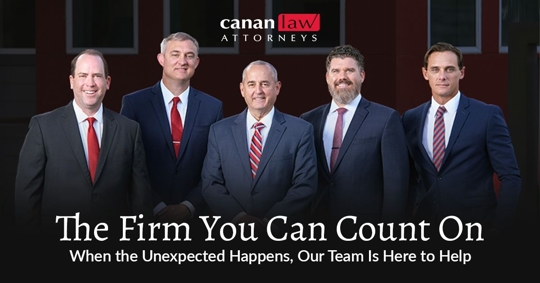The opposing attorney has rejected your settlement offer. Your case is going to trial. For the veteran attorney, the trial process can at times seem overwhelming but for a first-time plaintiff, it can be quite frightening.
The skilled St. Augustine trial attorney will explain each phase of the trial process in crystal clear detail which will leave you with an enlightened, fearless, and welcoming attitude toward going to trial.
What Is A Personal Injury Trial?
A personal injury trial is a process in which a plaintiff and a defendant to a dispute come together to present information in the form of evidence (testimony, documents etc.) in court, usually before a jury, so the jury might examine the evidence and determine whether the defendant should be held legally responsible for the alleged injuries suffered by the plaintiff.
There are six main phases in a complete personal injury trial process, discussed in detail below.
Phase 1 – Jury Selection
Jury selection is a process used to choose individuals (jurors) that will decide which party to a lawsuit will prevail over the other.
The jury is chosen from the jury pool. The jury pool is a group of citizens, in a district, selected at random from a list of registered voters, licensed drivers, and sometimes “ident card” holders, who are summoned to appear in court to serve on a jury.
The judge along with the plaintiff and defense attorneys choose which members of the jury pool will serve on the jury by asking them questions pertaining to the particular case (voire dire) to find out if a juror has a personal interest in the trial or a bias that may prevent him or her from deciding the case fairly. The goal of each attorney during jury selection is to choose jurors that are favorable to his or her case.
Further, the judge can excuse potential jurors during this phase, based on their responses to certain questions that will help determine whether the potential juror can judge the case fairly. Both the plaintiff and defense attorneys may exclude a certain number of jurors that are not favorable to their case through the use of “peremptory challenges” and challenges “for cause.”
A peremptory type of challenge can be used to exclude a juror for any reason (including race or gender), and a challenge for cause can potentially be used to exclude a juror who has shown that he or she cannot be reasonably fair in deciding the case (any reason that might indicate any bias.)
Once the jurors are selected they are sworn in by the judge.
Phase 2 – Opening Statements
An opening statement is an introductory statement made by the attorneys for each side at the start of a trial. The primary purpose for an opening statement is to explain the case, discuss the issues to be decided, and outline the evidence in order to give the jurors a general picture of the facts and issues to help them understand the evidence that will be presented.
During the opening statements, a skilled St. Augustine trial attorney will present, in the best possible light for the client, his or her opening statement as a chronological account of what happened from the client’s point of view. In doing so, the attorney will present facts of the accident and discuss the defendant’s alleged role in causing the plaintiff’s injuries in an effort to get a judgment against the defendant.
Because the plaintiff has the burden of proving the defendant’s liability, the plaintiff’s attorney will give his or her opening statement first, which is often more detailed than the defense attorney’s opening statement.
The defense, in its opening statement, will present its own interpretation of the facts, and set the stage for rebutting the plaintiff’s key evidence. If there are multiple defendants, then each one will have the opportunity to make an opening statement in a pre-determined order.
Phase 3 – Presentation of Evidence
Presentation of evidence often known as the “case-in-chief” is the phase of a personal injury trial where each side presents its key evidence and arguments to the jury.
In its case-in-chief, the plaintiff’s attorney will systematically present evidence to convince the jury that the defendant is legally responsible for the plaintiff’s injuries.
Moreover, the evidence that the plaintiff’s attorney will introduce in his or her case-in-chief may include testimony of experts and witnesses and physical evidence. Physical evidence may include medical reports, X-rays, documents, photographs, depositions, video recordings, text messages, email, police or incident reports, schematics, blueprints, etc.
The attorney who called the witness to the stand will first ask questions of that witness (direct examination). After direct examination is concluded, the lawyer for the opposing party may ask further questions of that witness (cross-examination). After cross-examination, the lawyer who called the witness has a final opportunity to ask questions (redirect examination).
After the plaintiff’s attorney concludes his or her case-in-chief and rests, the examination process begins all over again during the defense attorney’s case-in-chief where he or she will also present testimony of experts and witnesses and physical evidence.
The elite St. Augustine trial attorney knows that the key to success at trial, especially during the presentation of evidence phase, is preparation, focus, and execution.
Phase 4 – Closing Arguments
A closing argument is the final argument by an attorney on behalf of his or her client after both sides have had an opportunity to present their evidence and rested their cases.
Since the plaintiff has the burden of proof, the plaintiff’s attorney will make the first closing argument, followed by the attorney for the defendant. The plaintiff’s attorney has the opportunity to respond to the defense’s closing argument.
Each attorney, in his or her respective closing arguments, will seek to sum up the evidence, tell the jury what the evidence has proved or failed to prove, and try to persuade the jury to find in favor of his or her respective clients.
Since closing arguments provide the attorneys with their last chance to persuade the jury, the experienced and innovative attorney will anticipate that the closing argument will provide the most dramatic moments of the trial and therefore, will make his or her argument with just enough theatrical flair to leave a lasting, powerful, and convincing impression on the jury.
Phase 5 – Jury Instructions
Jury instructions are the set of legal standards (applicable law) that jurors should follow when deciding a case. The judge decides what legal standards should apply to the plaintiff’s case based on the personal injury claims at issue and the evidence presented during trial.
After the attorneys have completed their closing arguments, the judge gives instructions (example – negligence is the failure to use reasonable care) to the jury that it will need to decide whether the defendant should be held responsible for the plaintiff’s alleged injuries.
Phase 6 – Jury Deliberation
Jury deliberation is the phase of the trial in which the jury meets in the jury room for the first time, to discuss and examine the evidence and jury instructions that were presented in court and to decide whether the defendant is liable for the injuries suffered by the plaintiff and if so, the appropriate compensation for those injuries.
Once the jury reaches a decision the judge will announce the verdict.
In conclusion, the seasoned attorney that is prepared, organized, and takes charge of the trial with a clear, methodical, and convincing presentation will a have distinct advantage over the opposing attorney, which may prove to be quite beneficial to his or her client’s success. Our tenacious St. Augustine trial attorneys with Canan Law are ready to litigate your personal injury case. Call us at (904) 849-2266.



